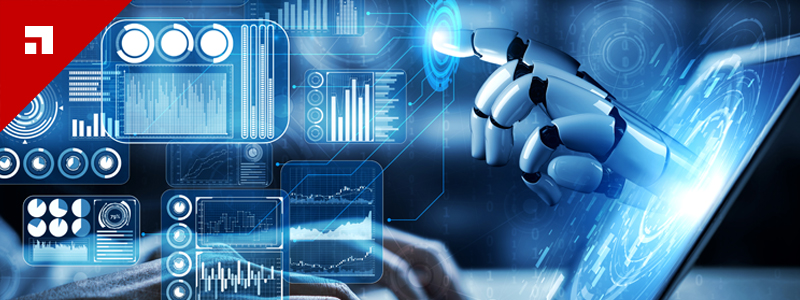Ivanti Neurons: Go Way Beyond Workflow With Hyper-Automation
It’s no secret that IT organizations are facing increasingly complex challenges. Device proliferation, demands to access data from anywhere, ensuring security both on and off campus—and this year, a major shift to remote work—have IT departments struggling to stay above water. As both human and budgetary resources are spread thin among these and other challenges, the question arises:
How can IT expect to deliver a quality user experience?
They need a complete picture of the landscape they oversee—visibility of all the assets as well as the state of security—while optimizing costs across the services and assets they provide. The challenge of navigating all these complex demands is only magnified by the need to deliver an experience their users value.
The Answer: Ivanti Neurons
Those organizations that attempt to tackle these ever-growing headwinds with more people will suffer and lose out on the opportunity to implement a truly competitive edge. The only way for organizations to handle and excel in this complexity is through hyper-automation, which is a term I go into detail about in my blog Hyper-Automation is Your Next Competitive Advantage.
What enterprises need is the next generation of assistance that comes from automation. Automation is a term that has been used in enterprises for several decade. It has evolved from basic task-based workflow automation, to human directed automation using no code / low code tools to build more complex process orchestration. In recent years with the advancement of AI/ML, automation has been able to engage with users through conversational AI and Virtual Assistants.
Now, hyper-automation is the next level. Gartner refers to hyper-automation as “a set of business or IT process design and decisions where the scope and degree of automation delivered spans a spectrum of technologies”. To achieve this, there are foundational elements needed to really accelerate your automation strategy to one of hyper-automation:
- A strong discovery capability to find all assets in your environment
- The ability to make intelligent and contextual decisions when automating
- The right integrations and actions available to resolve and heal issues
Discover and Reconcile with Ivanti Neurons for Discovery
You can't manage what you don't know about. Discover all devices from cloud to edge using multiple methods such as passive and active discovery. The problem is that it doesn’t just stop with discovery and getting data into a single system.
In today's enterprise environments, there are many silos of data and those silos are connected, but those connections are not always obvious or easy to make. Ivanti Neurons for Discovery pulls data from multiple data sources, using both active and passive scanning techniques to be able to look in all corners. Ivanti Neurons pulls data in and reconciles data out, delivering consistent and complete data among corresponding data sources. This results in a comprehensive view of users, endpoints, and assets in your organization. A critical set of information in your hyper-automation maturity.
Detect and Diagnose Through Advanced Machine Learning with Ivanti Neurons
Once you have that comprehensive list of assets along with the reconciled data to give you a 360-degree view of those assets, you have the foundation to detect issues when they first occur, and even predict issues before they happen. This means leveraging bots to constantly monitor the user experience, getting insights into the state of the device in real time, making decisions within the context of the device, user and location. Machine learning delivers a much better user experience, allowing the user to interact with the bot (that is working overtime) to provide them a great user experience. Ivanti Neurons is that autonomous system, proactively and predictably detecting issues to self-heal, or self-secure or self-service through hyper-automation.
Heal and Remediate with Ivanti Neurons for Healing
Momentum toward autonomous systems will continue in the coming months and years, quickly evolving systems that facilitate a seamless user experience. These systems leverage more advanced AI/ML, such as more unsupervised learning, deep learning, neural networks that quickly and accurately automate incident response before they impact the user of the organization. The innovations available today enable hyper-automation to improve service, de-escalating issues that would have typically been pushed to IT specialists thanks to automating known troubleshooting tactics and enabling Tier 1 Support Analysts to remediate issues with insights to address challenges automation didn’t resolve. The Ivanti Neurons for Healing hyper-automation platform gives enterprises the power to improve that Mean-Time-to-Resolution metric and improve user satisfaction.
Protect and Prioritize with Ivanti Neurons for Patch Intelligence
Equal to the service automation is security. Hyper-automation speeds up vulnerability remediation efforts, bringing enterprises closer to the 14-day SLA target. Cyberthreats are increasing in both frequency and the measure of damage they can cause. SecOps teams are on-guard 24/7, yet the data on threats is more than they can manage and prioritize in order to maintain optimal protection.
Ivanti Neurons for Patch Intelligence does the work of assessing the organization’s threat surface, identifying relevant vulnerabilities, and prioritizing the application of patches to minimize risk. Both supervised and unsupervised machine learning algorithms solves the challenge of researching, prioritizing and providing actionable intelligence that security teams can act on, faster.
We fundamentally believe that as organizational adoption of automation matures, the opportunity to discover, detect, heal, and secure autonomously will have a significant advantage in the speed in which they deliver a service, the accuracy of that service, and the lower cost in which services are delivered. The Ivanti Neurons hyper-automation platform takes organizations way beyond previous expectations of workflow automation, addressing the complex challenges affecting work both today and for years to come.

